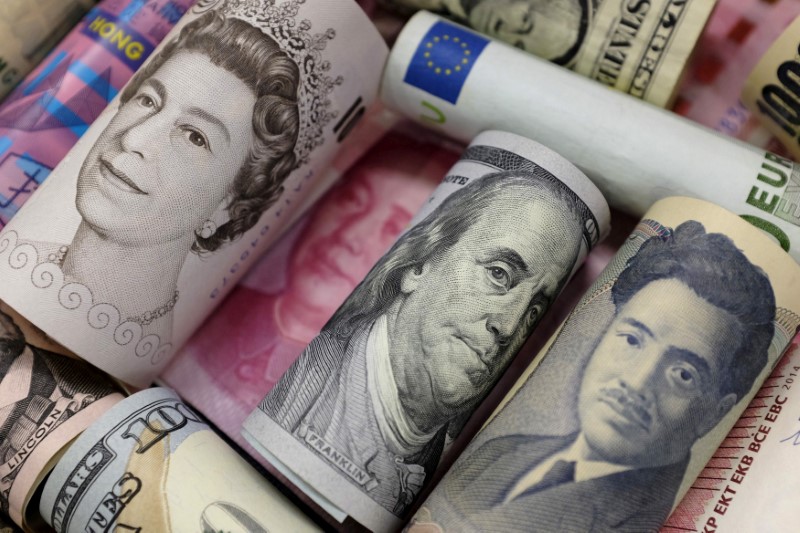By Sumanta Dey
BENGALURU (Reuters) - Emerging Asian currencies this year are set to extend their fall from 2016, as expectations of faster rate hikes from the Federal Reserve and U.S. President-elect Donald Trump's promise of fiscal stimulus push the dollar higher, a Reuters poll showed.
Leading the losses will likely be the Chinese yuan, which slumped around 6.6 percent in 2016 and was one of the main reasons for financial market volatility, despite Beijing supporting it by burning through reserves to offset the impact of outflows.
These broad conclusions from the views of many dozens of foreign exchange strategists took into consideration a dramatic 1 percent appreciation in Beijing's partly-managed currency in the first trading days of the year.
On Friday, the People's Bank of China sharply raised the midpoint for the yuan by 0.9 percent to 6.8668 per dollar, the biggest daily hike since removing a dollar peg more than a decade ago, in yet another attempt to thwart a steady fall in the currency.
"What happens in the U.S. this year, whether it is the Fed's rate hikes or Trump's fiscal policies, will drive Asian currencies through the dollar and we are forecasting another year of depreciation across the board," said Khoon Goh at ANZ, who was the most accurate forecaster of Asian foreign exchange rates in Reuters polls in 2016.
"But some high-yielding economies with stronger fundamentals such as India and Indonesia are in a better position to weather those setbacks, compared to South Korea and Taiwan where the follow through from China will be felt much more."
The poll of almost 60 currency strategists taken this week showed the yuan
That 12-month consensus view is the weakest in several years of Reuters polls and, if reached, would mark the lowest level for the closely managed yuan in nearly a decade. The weakest forecast was even lower, at 7.60 per dollar.
While upcoming economic data from China are expected to show it entered 2017 on a solid footing, the fact that it has come on the back of renewed aggressive government spending has raised concerns of an eventual slowdown and continued capital flight.
China's FX reserves likely fell to $3 trillion in December from $3.052 trillion in November, the lowest since April 2011, according to a separate Reuters poll -- extending a trend in place during most of last year that highlights the difficulty Beijing faces in preventing the yuan from falling rapidly.
Adding to those risks are Trump's promises to brand China a currency manipulator and impose heavy tariffs on Chinese goods, both of which could further escalate tensions between the two top economies.
"2017 is going to be a year when investors try to second-guess what Trump does and we are probably in for quite a bit of volatility," Goh at ANZ added.
Fed policymakers have already begun factoring in assumptions of greater fiscal stimulus, and consequently higher growth, into their forecasts, minutes from its December meeting showed this week, suggesting rates could rise faster than the three moves predicted by them now.
That is likely to propel U.S. bond yields and the dollar higher, in turn denting currencies around the world.
With growth slowing down in several Asian economies from China to India to Indonesia over the past few years, the path of their currencies going forward will probably be a major factor affecting the course of regional economies.
The latest poll predicted losses were likely for all major Asian currencies, with the Taiwan dollar
The South Korean won
India's rupee
